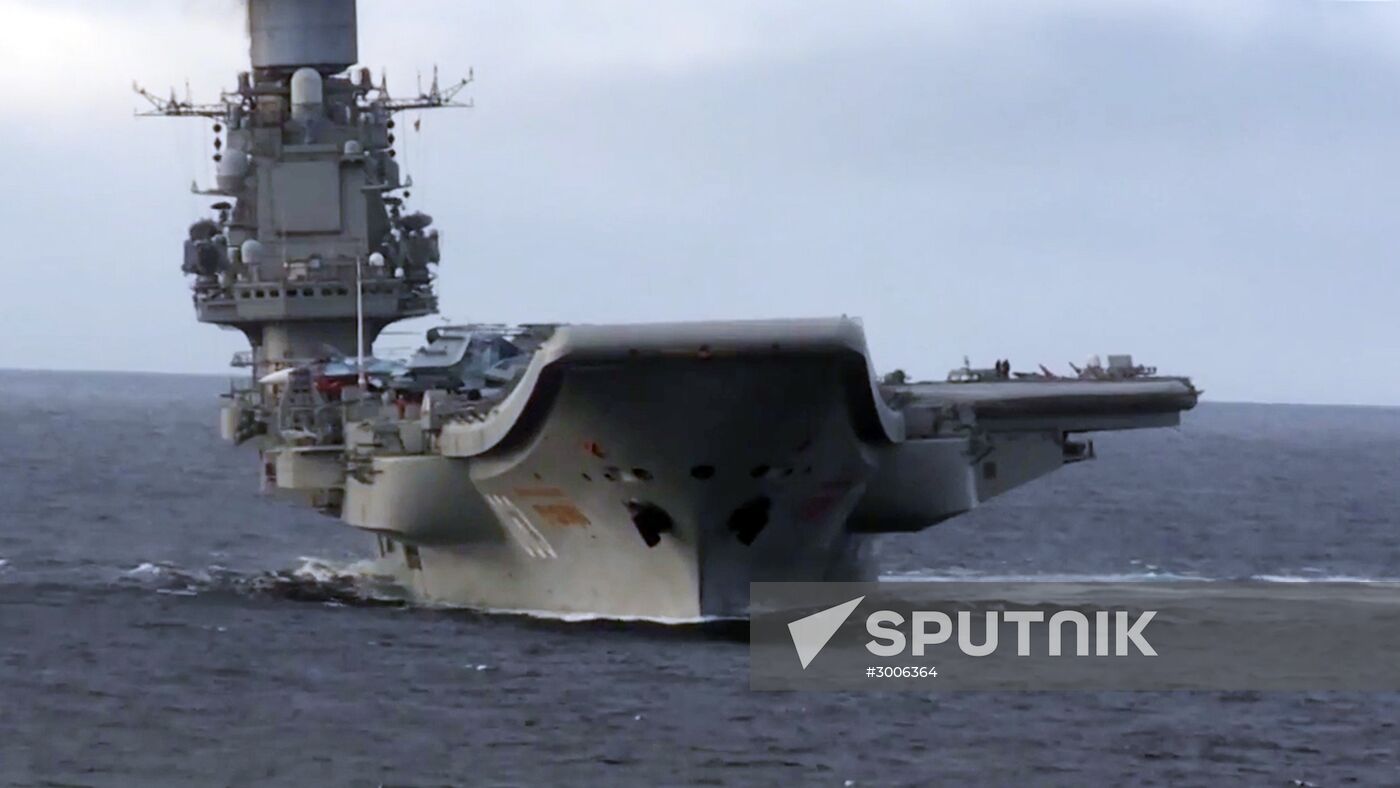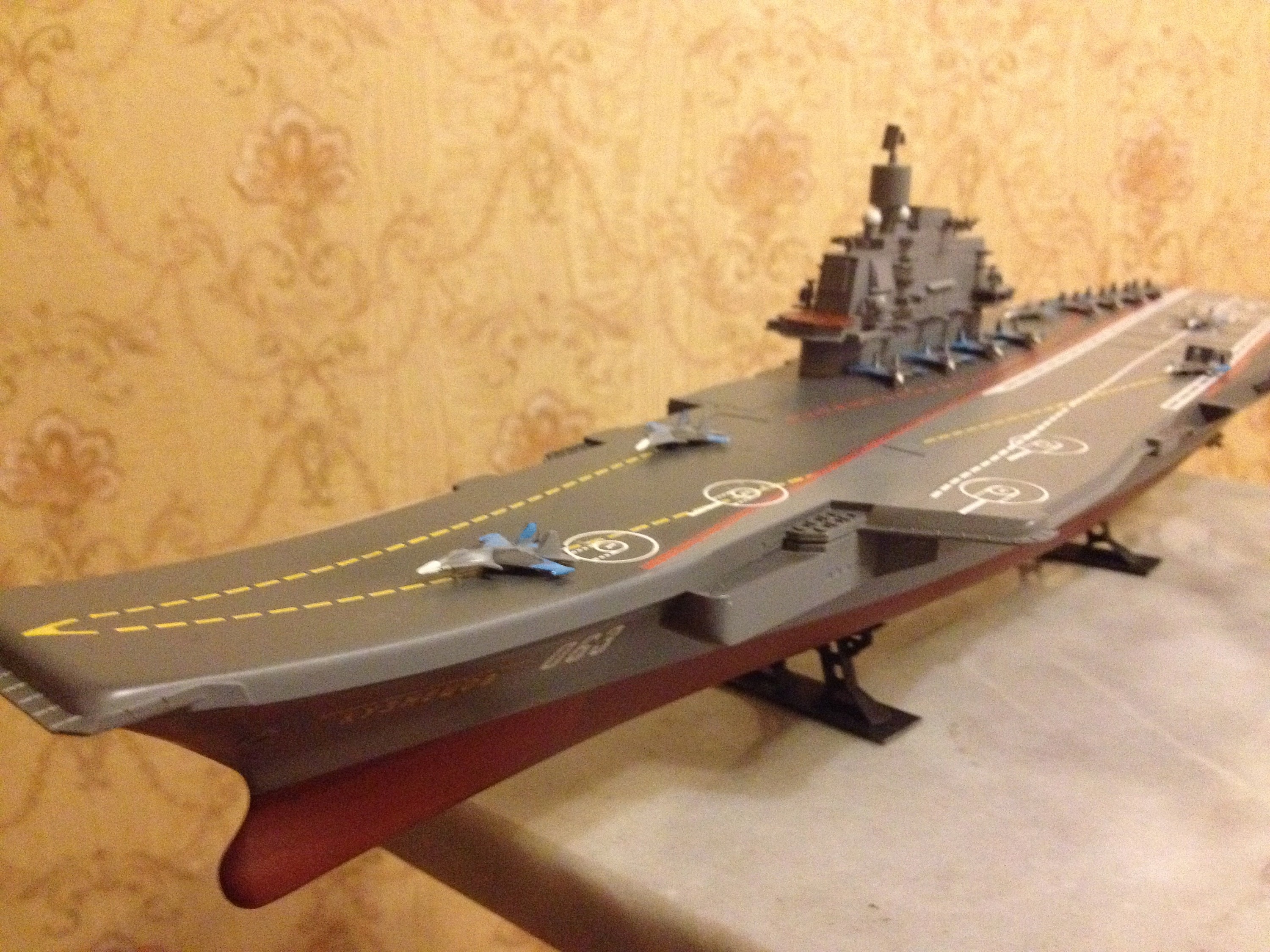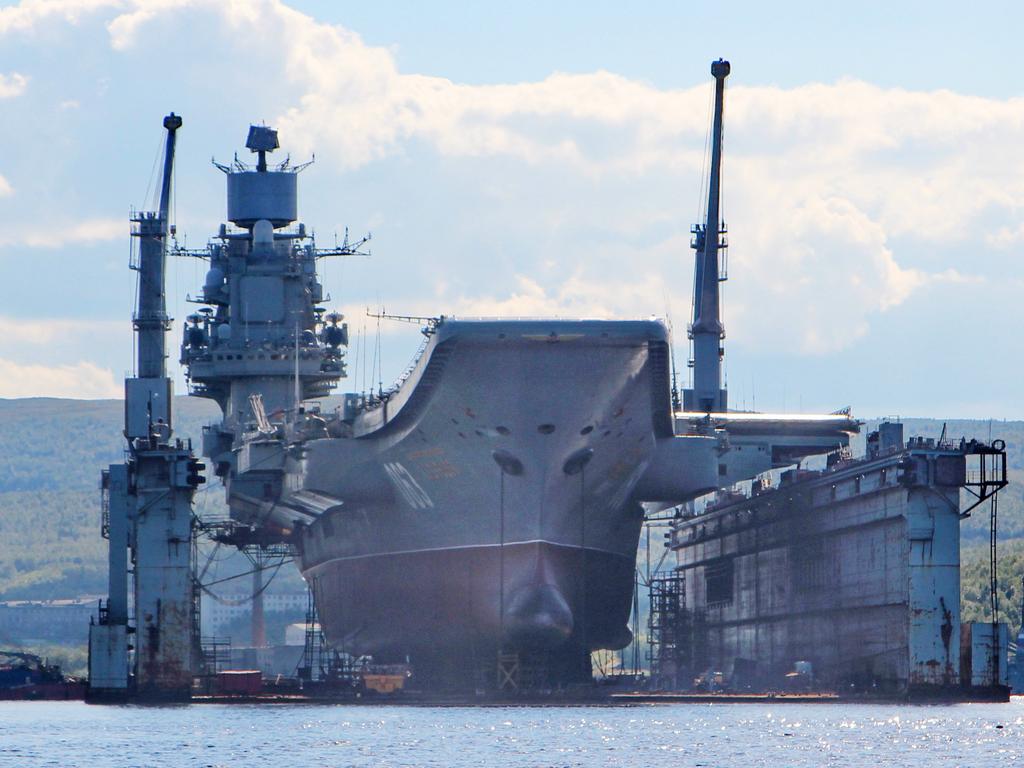Russia Aircraft Carrier - A Russian-state-run media outlet revealed footage depicting the large vessel being pulled by a tugboat this week. Although officials with Russia's Shipbuilding Corporation claim that all the underwater work necessary to revive the carrier is complete, a long and fruitful future for Admiral Kuznetsov is not a likely prospect.
A fire on board as it sailed near Turkey in 2009 killed a crew member. A month later, an accident while it was refueling off the coast of Ireland spilled 300 tons of oil into the ocean.
Russia Aircraft Carrier

Kuznetsov has become known for the dark black smoke it emits and the tugboats that accompany it in case of breakdown — both of which were on display when it sailed to Syria in 2016 for its only combat deployment.
Russia’s Sole Carrier Has A Bleak History
Varyag, a sister ship to the Admiral Kuznetsov, was still under construction when the Soviet Union dissolved in 1991. When the ships of the Soviet Black Sea Fleet were split between Russia and Ukraine, the Ukrainians took possession of the Varyag.
Ukraine then sold the unfinished vessel for $20 million to a Chinese buyer who claimed it would be converted into a floating casino. Russia's sole aircraft carrier, Admiral Kuznetsov, was introduced in 1991 but did not become fully operational until the mid-1990's.
The carrier served in Russia's Northern Fleet through the mid-to-late 2010s, deploying to the Mediterranean to support operations during Russia's intervention in the Syrian Civil War in 2016. Initially developed in the early 1990's, Admiral Kuznetsov was the only aircraft carrier to survive the dissolution of the Soviet Union.
A sister ship was constructed alongside the Kuznetsov, however, it was not complete when the USSR and was ultimately repossessed by Ukraine. Kuznetsov met disaster in 2018 when a seventy-ton crane smashed through the carrier's hull and caused its PD-50 drydock to sink.
Author Expertise And Experience
It was estimated by Russia's defense and shipbuilding industries that repairs to the Kuznetsov alone would cost as much as $1 billion. That figure did not include the costs of damage sustained by its drydock. Two workers died in the accident.
The Russian Navy, which does not have a domestic replacement for the PD-50, has since announced plans to recover the drydock, but the status of those efforts remains unclear. Jared Keller is the managing editor of Task & Purpose.
His writing has appeared in Aeon, the Los Angeles Review of Books, the New Republic, Pacific Standard, Smithsonian, and The Washington Post, among other publications. Contact the author here. Russia's sole aircraft carrier is finally on the move after spending roughly 10 months squatting at the Sevmorput Naval Shipyard in the country's northwest.
Known for its bleak and disastrous history, Admiral Kuznetsov has suffered from a series of unfortunate events since its reintroduction to service in 2017. Back in December, Russian outlets first reported that the carrier had begun the process of withdrawing from the dry dock.
The Admiral Kuznetsov Has Had Zero “Wins” Since
Just a few weeks prior to this, a "minor" fire erupted onboard the vessel, and Ukraine's defense ministry indicated that Admiral Kuznetsov was incapable of moving under its own power. "The level of trust developed between the U.S.
and allied forces throughout our time in the theater, including past iterations of NEST and other bi- and multi-lateral operations, will pay dividends going forward,” said Rear Adm. Dennis Velez, commander of the Bush CSG. "Our national security – as well as Euro-Atlantic security – draws upon the strength of teamwork and our common purpose as allied nations."

Maya Carlin is a Defense Editor with 19FortyFive. She is also an analyst with the Center for Security Policy and a former Anna Sobol Levy Fellow at IDC Herzliya in Israel. She has by-lines in many publications, including The National Interest, Jerusalem Post, and Times of Israel.
Sidelined for overhaul since 2017, the Kuznetsov was damaged in 2018 by a falling dockyard crane that left a 200-square-foot hole in its flight deck. This was followed in December 2019 by a major fire that killed at least one person while the ship was under refit in Murmansk.
Most recently, a fire last month caused what the Russian government called "minor" damage. "When the diving teams examined the ship's hull, it was found that the metal structures below the third deck were subjected to significant corrosion," RBC-Ukraine said, according to a translation.
"The holds are completely filled with muddy water, which makes it impossible to examine the ship from the inside in detail." The decrepit state of Russia's only aircraft carrier has only been magnified amid the Kremlin's ongoing invasion of Ukraine.
Strapped monetarily by Western-imposed economic sanctions and facing a great weapons shortage, the current outlook of the Russian military does not look too promising. A floating crane came crashing down on the ship's deck in 2018, killing one worker and injuring several others.
One year later, 14 employees were sent to the hospital after a welding accident in the ship's engine room broke out. By Jared Keller | Published Mar 2, 2023 11:51 AM EST The Kuznetsov's lackluster construction is accompanied by constant mishaps on board.

In 2016, the carrier deployed to combat in Syria for the first time. Unfortunately, two airframes were lost due to a faulty arresting wire, forcing the rest of the carrier-based platforms to relocate to shore. This current round of multicarrier operations comes just months after both the Bush and next-generation USS Gerald R. Ford aircraft carrier integrated with the French Navy's Charles de Gaulle aircraft carrier, the Cavour, and the United Kingdom's HMS Queen Elizabeth aircraft carrier for an unprecedented
five-carrier maritime exercise party back in November. Photos published on the U.S. military's Defense Visual Information Distribution Service (DVIDS) last week showed the Bush streaming in formation with the Italian Navy aircraft carrier ITS Cavour and the Spanish Navy amphibious assault ship-aircraft carrier ESPS Juan Carlos I, among other warships.
The refit begun in 2017 was meant to extend Kuznetsov's service life another two decades, removing missile silos and adding new electronics and anti-aircraft systems as well as allowing it to carry 50 aircraft. Since then, however, Kuznetsov has only had more problems.
Admiral Kuznetsov has been Russia's only aircraft carrier since the late 1990s, after Moscow sold and decommissioned other carriers inherited from the Soviet Union. Since then, Kuznetsov has suffered mechanical failures and accidents that have limited its operations.
This past week marked "the first time Bush operated directly alongside allied carrier strike groups since late November when there were five allied strike groups throughout European waters," U.S. Navy Lt. Cmdr. Tyler Barker, a spokesman for U.S.
Naval Forces Europe-Africa and the 6th Fleet, told Task & Purpose. Following the Kuznetsov's short stint in Syria, the vessel was sent home to undergo repairs meant to extend its lifespan. In October 2018, Russia's largest floating dock- the PD-50- sank, ripping a 200-square-foot hole in the center of the carrier's deck.

The Bush's Carrier Strike Group 10 (CSG 10) is currently made up of Carrier Air Wing 7, Destroyer Squadron 26 — comprised of the Arleigh Burke-class guided-missile destroyers USS Nitze, USS Farragut, USS Truxtun, and USS Delbert D. Black.
— and the Ticonderoga-class guided-missile cruiser USS Leyte Gulf, according to the Navy. In 2018, a floating dry dock holding the carrier sank, bringing down a 70-ton crane that smashed a hole in the deck and killing one worker.
A year later, a fire broke out while workers were welding in the engine room, killing two and injuring 11. Three NATO aircraft carriers from the United States, Italy, and Spain just wrapped up multicarrier operations in the Mediterranean Sea as part of the USS George H.W.
Bush Carrier Strike Group's scheduled deployment to the U.S. Naval Forces Europe area of operations. "The ship was supposed to become one of the main ones in the USSR," Karginov said, according to a translation of his remarks.
"After the collapse of the country, Ukraine preferred to sell it for a few bottles of vodka, at the price of scrap metal." One of the carrier's main limiting factors is its power source. Mazut- the extremely thick and tarry substance that appears to engulf the Kuznetsov when it travels is not very efficient.
Since a black hue of smoke surrounds the carrier in the water, the ship is detectable from miles away. The Admiral Kuznetsov has never been lucky. Launched in 1985, the 60,000-ton vessel has suffered engine breakdowns, multiple fires, and bizarre shipyard accidents.

In 2012, it had to be towed to port by a tugboat after losing propulsion off the French coast. Historically, Russia has been a continental power whose strength is its massive army (as has China). The Soviets did build aircraft-carrying ships, but their role was different from that of US Navy carriers.
Russia's challenge now isn't projecting naval airpower into the Mediterranean or the Pacific. It's defeating Ukraine — or at least holding off fierce Ukrainian counterattacks. "According to the current plan the aircraft carrier will enter a dock for repairs at the 35th plant in April. The repairs will last until September," a defense industry source told TASS, a Russian state news outlet on Tuesday.
The Russian Navy's sole aircraft carrier, which has been waylaid by years of malfunctions and maintenance issues, will require another year before it can return to service from ongoing repair and modernization work, a military source told Russian state media on Tuesday.
“The security environment is uncertain; NATO's capability and will is not,” said U.S. Navy Vice Adm. Thomas Ishee, commander of Naval Striking and Support Forces NATO (STRIKFORNATO) and U.S. 6th Fleet, in a statement. "Enabled by trust, the agility, ingenuity, and tenacity demonstrated by the sailors, Marines, and airmen deter aggression and show we are ready to defend the alliance."
The carriers were taking part in NATO Vigilance Activity Neptune Strike 2023-1 (or NEST), the first such iteration of the maritime exercise this year, which saw more than 31 ships and 135 aircraft (including the new F-35 Joint Strike Fighter).
operated "in close coordination" alongside supporting units from Greece, Turkey, Croatia, Hungary, the Netherlands, and Albania, according to NATO.
russian aircraft carriers in service, list of aircraft carriers wikipedia, current russian aircraft carriers, russian aircraft carrier news, russian aircraft carrier fire, countries with aircraft carriers, number of russian aircraft carriers, russian aircraft carriers today
